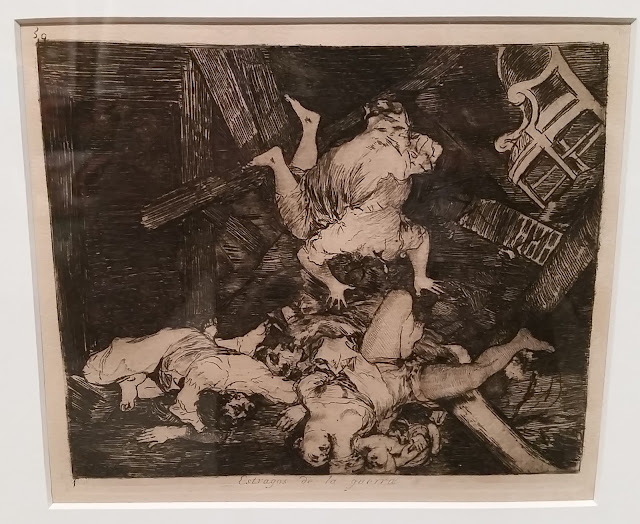The next print that stood out for me during my visit to the Tucson Museum of Art was this etching by Goya (above). It's from his series Desastres de la Guerra (The Disasters of War), a series of etchings he made between 1810 and 1820 depicting the horrors of the Peninsula War that ravaged Spain during the previous decade. This print shows a tangle of corpses in a house that has been destroyed by cannon fire. I notice how Goya still uses classical drawing techniques even while he draws a violent subject form real life: the legs of the man lying on his back in the foreground could easily have come straight from a Renaissance painting.
Next, this beautiful etching by German artist Kathe Kollwitz, from the 1890s:
The wall text said "etching", but the areas of rich dark tone indicate that she also used aquatint -- and in a brilliantly expert way, too. Look at all that variation in the textures of the shadows between the figures: any printmaker will tell you how much technique you have to master to be able to do that.
Finally (for today), this line etching by Bonnard, of the Parc Monceau in Paris:
Bonnard made a fair number of prints, but they were mainly lithographs. So it was nice to see an etching, and one in which he suggests so much form and space with a hasty scribbling style of moving the etching needle.
Once again: to see prints like these in Tucson, an out-of-the-way sort of town, shows that there are some serious (and seriously moneyed) art collectors in Arizona.


